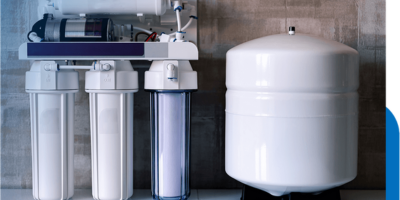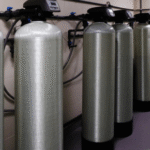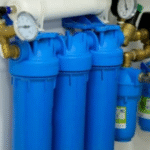Let’s be honest—most of us don’t really think twice about the water that pours from our kitchen taps or showerheads. We assume it’s clean, safe, and handled by someone else, somewhere upstream. But here’s a little truth bomb: just because water is clear doesn’t mean it’s clean. And the stuff you can’t see? That’s where the real concern lives.
Recently, I was chatting with a neighbor over coffee when she mentioned her daughter had started breaking out in strange rashes. They’d changed soaps, switched detergents, even tossed out every scented lotion in their cabinet—nothing worked. Then, a routine test revealed sky-high chlorine levels in their tap water. That revelation hit close to home. How much do we really know about what flows into our homes every single day?
Turns out, not enough.
Water Isn’t Just “Wet”—It’s a Complex Cocktail
Water has a secret life. Depending on where you live, it may contain chlorine, lead, pesticides, nitrates, bacteria, or even trace pharmaceuticals. Sure, municipalities do their best, but public systems are aging, infrastructure is stretched thin, and the truth is—there are blind spots.
The good news? You don’t need to be a scientist to protect yourself. You just need the right tools and a bit of guidance. That’s where professional water treatment services come in. These aren’t just one-size-fits-all filtration units from your local hardware store. No, real water treatment digs deeper. It’s tailored, technical, and rooted in understanding your specific home’s issues—whether it’s hard water build-up ruining appliances or unfiltered contaminants slipping past your tap.
Knowledge First: Why Testing Matters More Than You Think
Here’s a scenario. You notice your coffee tastes weird lately. Or your skin’s feeling drier than usual. You shrug it off. But those small signs? They could be your water waving a red flag.
Before you shell out cash on filters or fancy systems, know exactly what you’re dealing with. Many reputable companies now offer free water testing—no strings, no pressure. And frankly, it’s one of the smartest moves you can make. A water test might uncover unexpected levels of iron, bacteria, or even arsenic (yikes), all of which require different solutions.
And here’s the kicker: most people are surprised by their results.
One family I know discovered they had dangerously high nitrates after their newborn began developing health complications. They’d been drinking, bathing, and cooking with that same water for years. Testing was their turning point.
Let’s Talk Systems, Not Just Filters
So you’ve got your water test results. Now what?
This is where things can feel a little overwhelming. Reverse osmosis, UV sterilization, ion exchange… the jargon gets dense fast. But don’t worry. You don’t need a chemistry degree—just a little context.
Think of water systems home setups like personalized toolkits. They’re designed to handle exactly what your water needs—no more, no less. If you’ve got hard water, a softener might be your fix. High chlorine? A carbon-based filter can neutralize that. Bacterial concerns? UV purification steps in.
The point is, there’s no universal solution. Your neighbor’s system might not work for you. And that’s perfectly fine. The goal isn’t to chase a trend—it’s to treat your water, in your space, for your health.
Is It Worth the Investment?
This is the part people hesitate on: the cost. Yes, proper water treatment systems aren’t always cheap upfront. But the long-term payoff? Major.
Think fewer plumbing repairs, longer appliance lifespans, softer clothes, better-tasting food, and healthier skin. Think peace of mind, especially if you have kids, elderly parents, or immune-sensitive family members at home.
And if you break it down over years of daily use, the price per gallon of clean, treated water is surprisingly affordable—often less than what you’d spend buying bottled water monthly.
So, Where Do You Start?
Start with curiosity. Start with questions. Don’t fall for fear tactics or shiny sales gimmicks. Ask for that water test. Read your local water quality report. Learn what you’re really drinking and bathing in.
And when you’re ready, work with a trusted local expert who listens first and sells second. Water treatment is personal—it should be tailored, not templated.
In a world where we scrutinize the food we eat, the air we breathe, and the products we use on our skin… it’s time we gave water the same thoughtful attention. After all, it touches nearly every moment of our lives. Shouldn’t we make sure it’s doing more good than harm?



